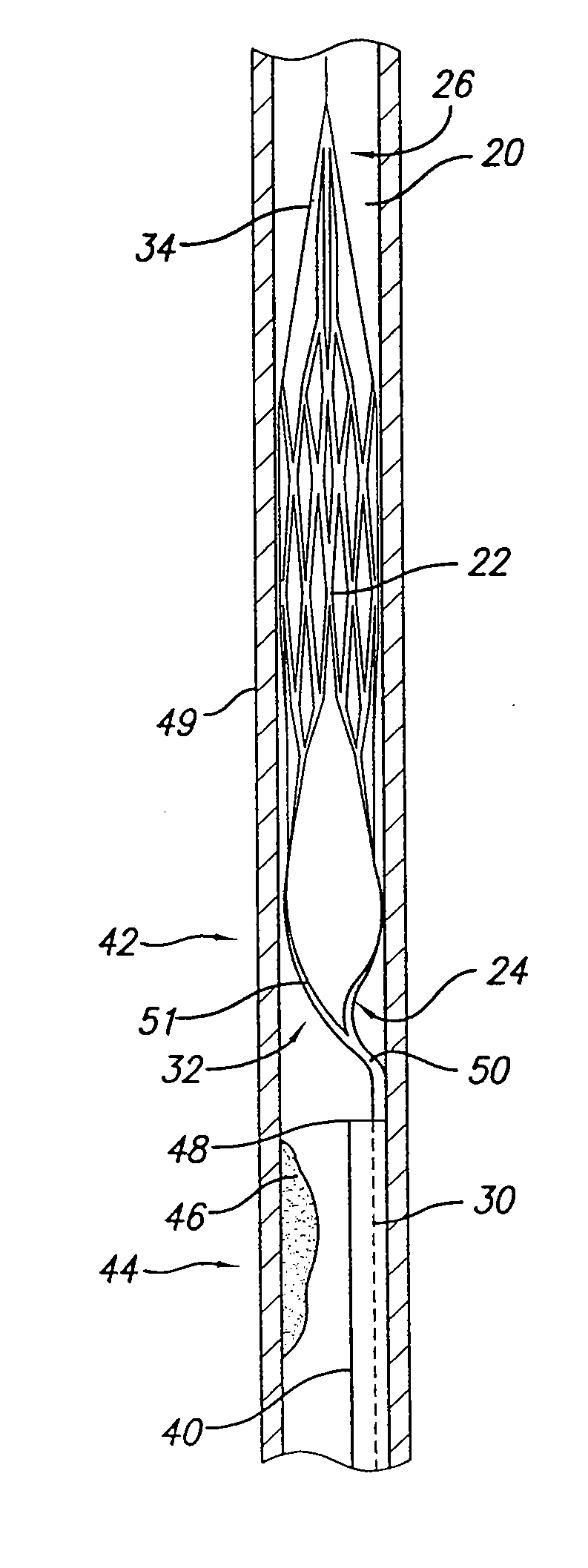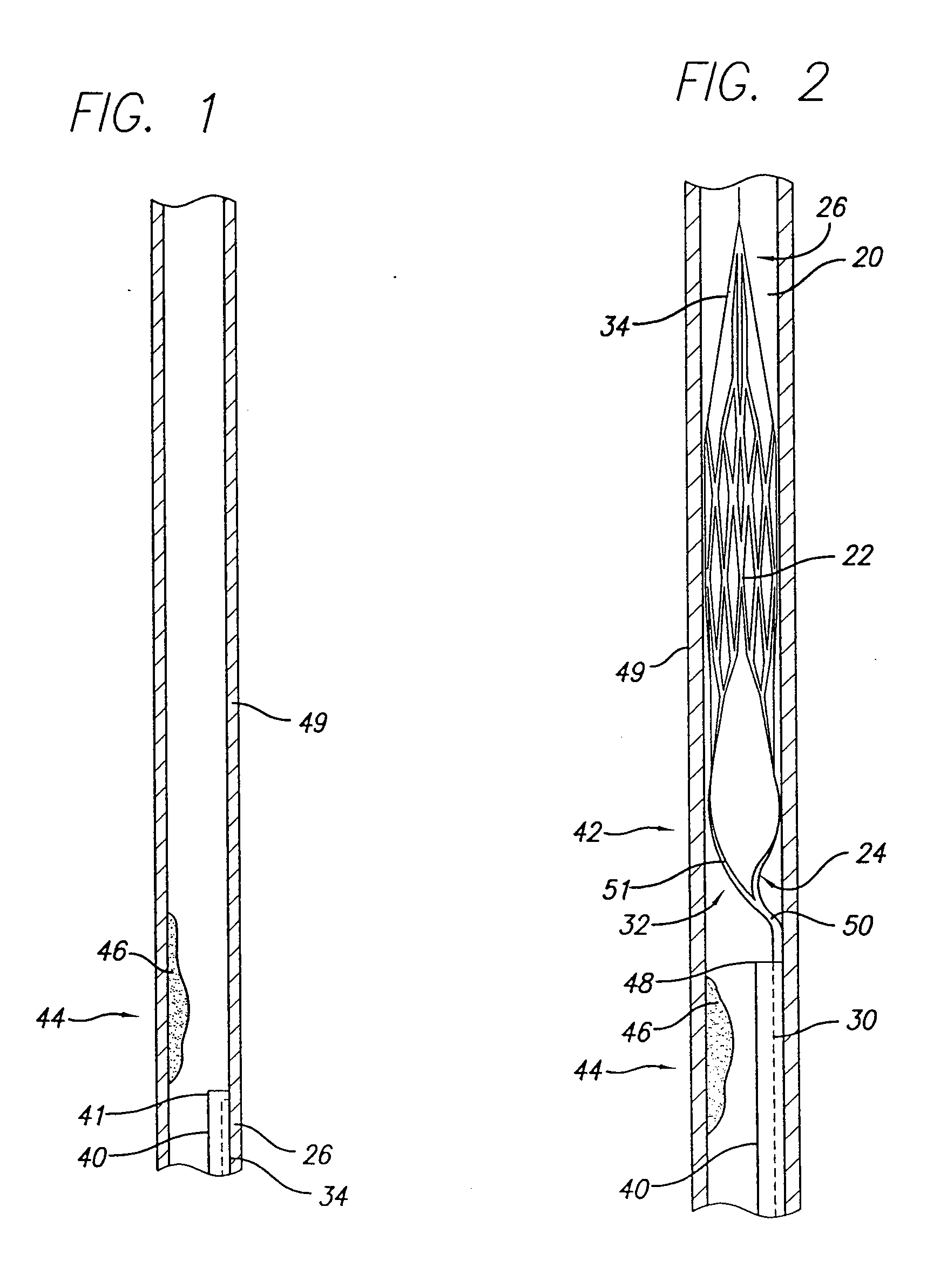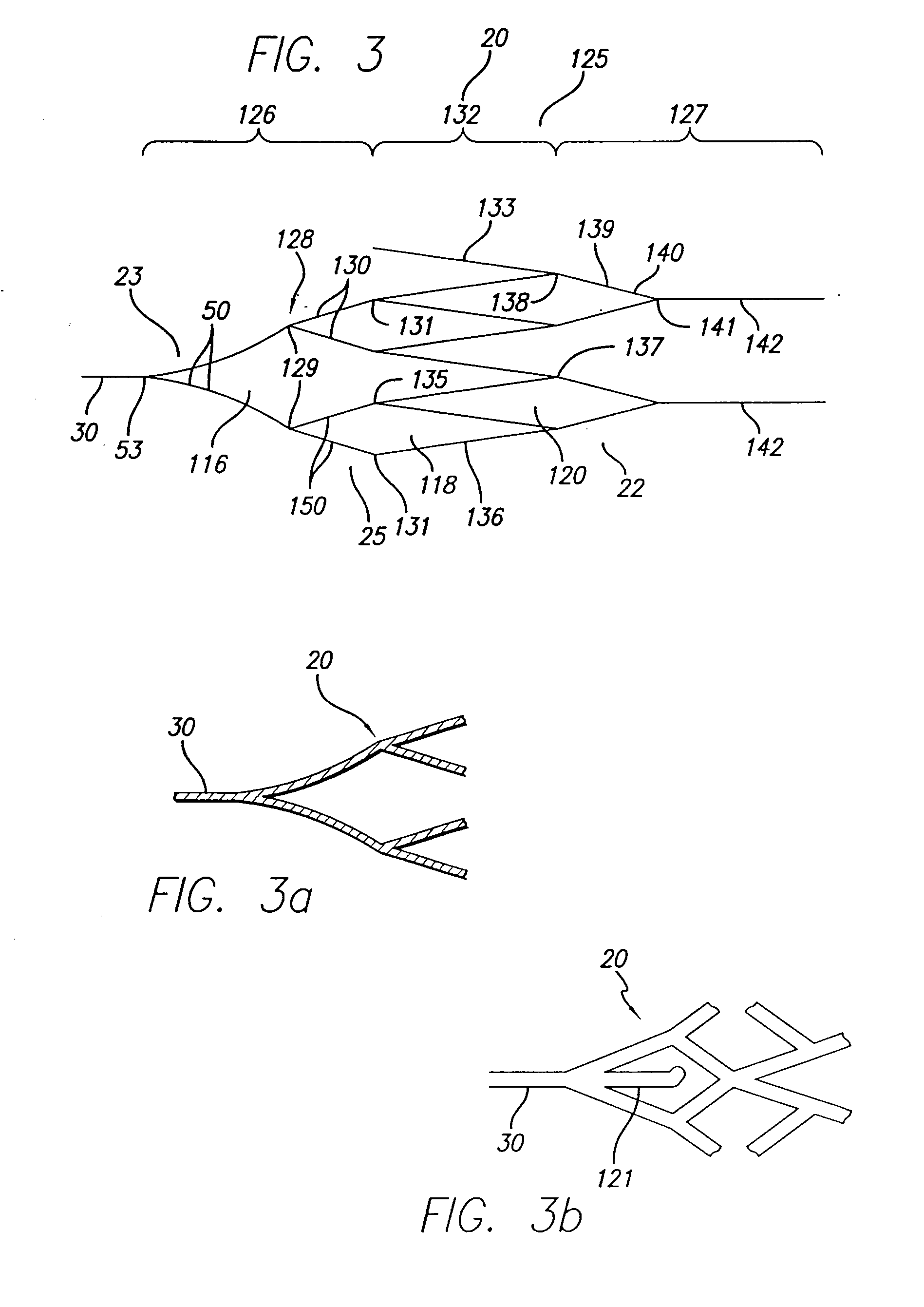Embolic basket
a basket and emboli technology, applied in the field of intravascular devices and systems, can solve the problems of emboli not being fully vaporized and thus entering the bloodstream, affecting the patient's health, and releasing emboli into the circulatory system can be extremely dangerous and sometimes fatal, so as to improve the radial and angular resistance to collapse and restore the patency of blood vessels
- Summary
- Abstract
- Description
- Claims
- Application Information
AI Technical Summary
Benefits of technology
Problems solved by technology
Method used
Image
Examples
Embodiment Construction
[0042]Referring now to the drawings, and in particular FIGS. 1 and 2, there is shown a basket device of the present invention. The basket device 20 is adapted to provide more consistent and improved radial opening as well as enhanced angular resistance to collapse. Moreover, the basket device 20 of the present invention is configured to facilitate the maintenance of clearance in its interior space along its length allowing the material or objects to enter and be captured. Furthermore, since it is contemplated that the basket device 20 be manufactured from a tubular member to form elements with very small widths and thicknesses, the device is thus more easily packed to a relatively smaller diameter and inherently embodies high longitudinal flexibility.
[0043]The basket device 20 (FIG. 2) of the present invention includes a body 22 having a proximal end portion 24 and a distal end portion 26. The proximal end portion 24 is intended to be affixed to a terminal end portion of an elongate...
PUM
 Login to View More
Login to View More Abstract
Description
Claims
Application Information
 Login to View More
Login to View More - R&D
- Intellectual Property
- Life Sciences
- Materials
- Tech Scout
- Unparalleled Data Quality
- Higher Quality Content
- 60% Fewer Hallucinations
Browse by: Latest US Patents, China's latest patents, Technical Efficacy Thesaurus, Application Domain, Technology Topic, Popular Technical Reports.
© 2025 PatSnap. All rights reserved.Legal|Privacy policy|Modern Slavery Act Transparency Statement|Sitemap|About US| Contact US: help@patsnap.com



